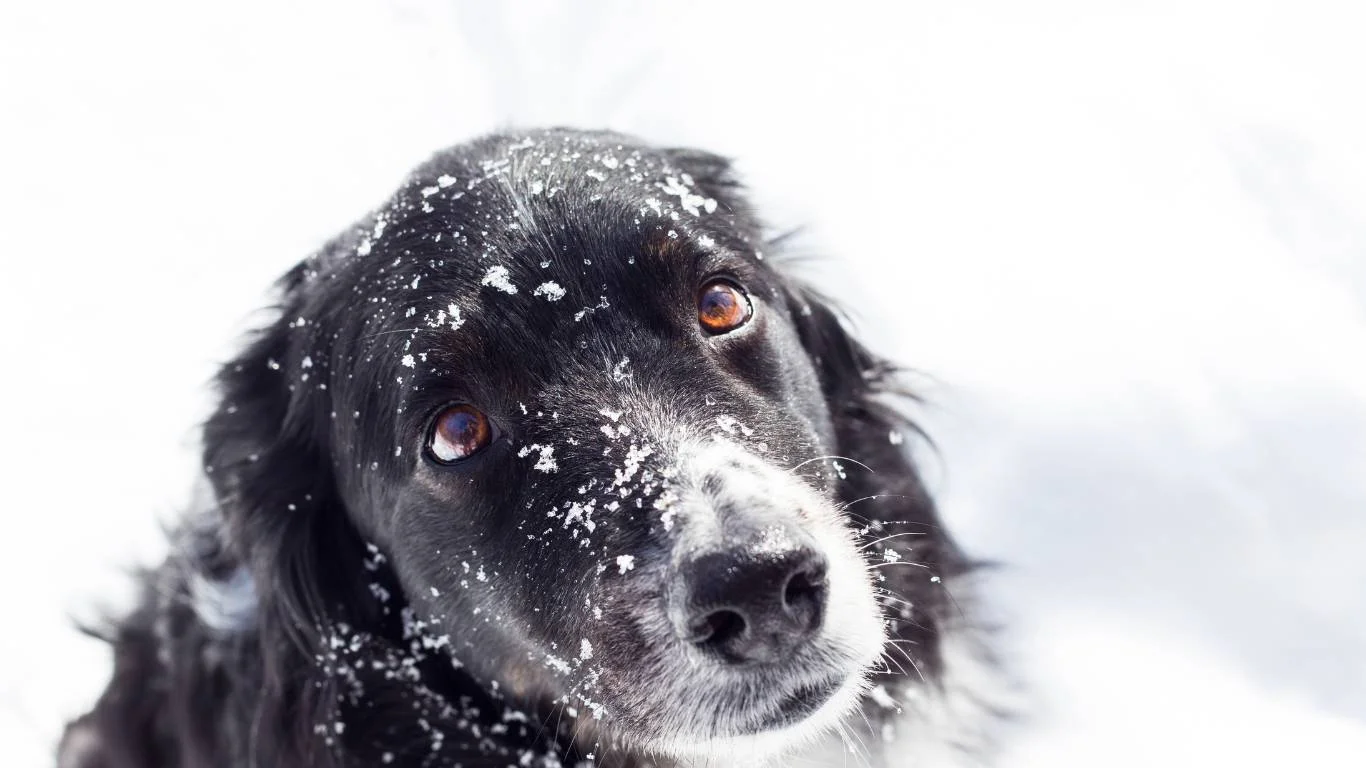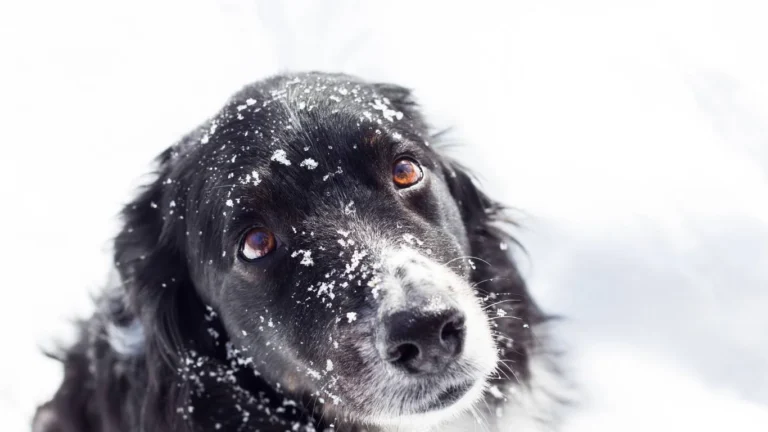What to Do If Your Dog Has a Limp Tail – Quick Recovery Tips
Ever noticed your dog wagging less or not at all, and suddenly you’re spiraling into Google looking up what to do if your dog has a limp tail? Yeah, I’ve been there—not just as a Veterinary Assistant with a nutrition focus, but as a fellow dog lover who’s seen this strange and kind of alarming issue firsthand. Whether it’s a droopy tail that looks like it gave up halfway through wagging, or your pup suddenly yelps when you go in for a scratch, tail issues are more common than most folks realize. So let’s break it all down in a relaxed, dog-parent-to-dog-parent kind of way.
First, Don’t Panic—But Don’t Ignore It Either

The good news? A limp tail doesn’t always mean something serious is going on. I’ve seen dozens of cases come through our clinic—many of them resolving quickly with some TLC and rest. But at the same time, tail limpness can be your dog’s way of saying, “Hey, something’s not right.”
From sprains to something called “limber tail syndrome” (more on that in a sec), there’s a lot that could be going on. Knowing how to tell the difference between a minor issue and something that needs a vet’s eyes is key.
Common Causes of a Limp Tail
Over the years, I’ve gotten used to hearing the same story from clients: “My dog was fine yesterday, then this morning, her tail was hanging like a noodle.” Here are a few usual suspects I always walk them through:
- Limber Tail Syndrome: Also called “swimmer’s tail” or “cold tail,” this condition is more common in active breeds like Labradors. It often shows up after swimming, bathing, or exposure to cold weather.
- Tail Sprain or Strain: Just like us, dogs can tweak a muscle, especially if they’ve been playing rough or wagging like crazy.
- Nerve Damage: If the tail has been tugged too hard or there’s trauma (like getting caught in a door), nerves might be involved.
- Infections or Abscesses: Sometimes, the tail can be affected by skin infections or even an infected bite or scratch.
- Underlying Conditions: Issues like arthritis, spinal problems, or even anal gland problems can sometimes show up as tail limpness.
From experience, I always tell pet parents to observe not just the tail, but their dog’s whole vibe—are they eating normally? Acting off? Limping elsewhere? That full picture helps narrow down the issue fast.
How to Do a Quick At-Home Check

Now, I don’t recommend poking around too much if your dog seems in pain, but a gentle once-over can give you clues. Here’s how I guide people who call in freaking out (understandably!) about their dog’s limp tail:
- Check for signs of pain: Touch the base of the tail and gently work your way down. Is there flinching? Whining? Pulling away?
- Look for swelling or heat: Feel for puffiness or warmth—this can be a sign of inflammation or injury.
- Observe movement: Is the tail completely still? Can they move it even a little?
- Scan the environment: Did they recently swim? Go on a long hike? Get a bath or trim near the tail?
More often than not, that last part—recent activity—is the golden clue. I once had a Labrador patient named Max who came in after a weekend lake trip. His tail was down, he was walking a bit funny, and his owners were ready to rush into surgery mode. Turned out it was classic limber tail—after some rest and anti-inflammatories, he was back to thumping the walls with it within a week.
When It’s Time to Call the Vet

I’m all about pet parents being proactive—it’s always better to check than to guess. If your dog’s tail hasn’t perked up in a day or two, or if they’re clearly in pain, it’s time to make that call. Here’s when I’d say, “Yup, bring ‘em in”:
- No improvement after 48 hours
- Obvious signs of pain, like whining or growling when touched
- Swelling, heat, or signs of infection
- Loss of bowel or bladder control (rare, but possible if nerves are affected)
- Behavioral changes like hiding, not eating, or moving stiffly
And no, you’re not overreacting by being concerned. I’ve seen the full range—from something as simple as a tail caught in a crate door to cases where the limp tail was just the first sign of a deeper spinal issue. Trust your gut. You know your dog best.
Rest, Recovery & Tail TLC
Let’s say the vet rules out anything major. Phew! But now you’ve got a pup with a sore tail and some healing to do. Here’s what I usually recommend—and what I’ve done myself for tail-tucked patients:
- Limit activity: Skip the fetch and zoomies for a few days. Couch time is healing time.
- Warm compresses: Gentle warmth can help reduce soreness. Just wrap a warm (not hot) towel and apply it to the base of the tail.
- Anti-inflammatories: If prescribed, give meds exactly as directed. Never self-prescribe human meds unless the vet okays it.
- Watch for licking or chewing: Some dogs obsess over the area—use a cone or distraction if needed.
I’ll never forget one sweet golden retriever who was so embarrassed by her limp tail that she refused to greet anyone at the clinic. We called it her “bad hair day” mood. But with some love, meds, and Netflix marathons on the couch, she bounced back in no time.
Why Your Dog’s Tail Is More Than Just a Wag Machine

So here’s something I always tell pet parents that usually surprises them—your dog’s tail isn’t just there to wag when they see you (although that’s the best part, right?). It’s actually a crucial part of their balance, communication, and even body temperature regulation. When I was training as a vet assistant, one of the first things we learned in anatomy class was how much the tail is connected to the rest of the spine and nervous system. Wild, right?
This is exactly why what to do if your dog has a limp tail matters. A droopy tail isn’t just a “meh, it’ll pass” moment. It could be your dog’s version of a limp or sore back. Dogs use their tails to express emotion, stay steady while running or turning, and sometimes even to cover their noses when they curl up to sleep.
Knowing this, you can start to see why a limp tail shouldn’t just be brushed off. That floppy tail might be affecting your dog more than they’re letting on—especially if they’re the type to act tough.
Feeding and Nutrition Support for Tail Recovery

Now, here’s where my nutrition background kicks in. Tail injuries and inflammation need more than just rest—what you feed your pup during recovery can absolutely help speed things up. I’ve worked with a ton of pet parents who didn’t even realize that diet could affect things like soft tissue healing, nerve health, and inflammation.
Key Nutrients to Focus On
- Omega-3 Fatty Acids: Found in fish oil or flaxseed oil, these help reduce inflammation and support joint health. I’ve seen dogs bounce back faster just from adding a quality fish oil supplement.
- Glucosamine & Chondroitin: These are especially helpful if the limp tail is tied to arthritis or spinal issues. Bonus points if it’s in a chew they actually enjoy.
- High-Quality Protein: Essential for muscle repair and recovery. If you’re feeding kibble, make sure the protein source is named (like chicken or beef, not “meat by-product”).
- Vitamin E and C: These antioxidants support healing and reduce oxidative stress in injured tissues.
I had a sweet little beagle named Ruby who came in with a limp tail after an intense doggy beach day. Once we ruled out major trauma, I worked with her owner to bump up her omega-3s and shift to a high-protein diet with minimal fillers. I swear, within five days she was wagging up a storm again like nothing had happened. Nutrition isn’t magic—but it gets close.
Managing Recurrence: Preventing Limp Tail in the Future

If your dog’s already had a limp tail once, you might be wondering—can it happen again? Short answer: yep. But the good news is, there are easy things you can do to lower the chances of a repeat tail tragedy.
Smart Prevention Tips
- Warm up before play: Especially for active dogs or sporting breeds, let them stretch and walk before launching into fetch mode.
- Avoid cold water shock: That first jump into icy lake water? It’s one of the top causes of limber tail. Let them ease in gradually if possible.
- Dry them thoroughly: After swimming or baths, make sure their entire back end is dried properly—especially in colder months.
- Crate and car safety: I’ve seen too many tails accidentally pinched in car doors or crate latches. Always double check the tail’s position before closing anything.
- Moderate exercise on busy days: If they’ve been super active, it’s okay to give them a lazy day to recover. Muscles and ligaments need time to bounce back too.
I always tell clients to think of their dog like an athlete. You wouldn’t do back-to-back marathon days without rest and recovery, right? Same goes for dogs—especially high-energy ones who don’t know when to quit.
Common Myths About Limp Tails—Busted
As someone who spends a lot of time chatting with pet parents in the clinic (and sometimes overhearing some very confident dog park conversations), I’ve heard a lot of tail myths. Let’s clear the air:
- “It’s just a sprain, ignore it.” – Not always true. What looks like a sprain could be nerve-related or even a symptom of something deeper. Observation is key.
- “It only happens to big dogs.” – Nope! I’ve seen it in Chihuahuas, Yorkies, and even a sassy Pomeranian once. It’s more about activity level than size.
- “If there’s no swelling, it’s fine.” – Internal inflammation won’t always cause visible swelling. Pain and behavior changes are often better clues.
- “It’s contagious.” – Nope again. This isn’t kennel cough. Limp tails aren’t infectious—they’re usually mechanical or physical in cause.
Honestly, one of the best things you can do is just trust your gut and observe your pup closely. If they’re not acting like their usual tail-thumping self, something’s probably up—even if it’s minor.
Stories from the Clinic: Real Dogs, Real Tails
Okay, one more for the road—because I think personal stories really help bring this stuff home. There was this goofy golden doodle named Benny. Came in totally out of sorts after a weekend camping trip. His tail was just… sad. Hanging there like a spaghetti noodle. His humans were worried sick. But after we ruled out fractures or infection, it turned out to be a classic case of overuse and cold exposure.
We gave him anti-inflammatories, adjusted his diet with some omega-3 boosters, and his parents got him a new orthopedic bed (tail support matters!). A week later, they sent us a video of him doing his signature wiggle dance, tail and all. It was such a cool reminder of how resilient dogs are—and how a little attention to detail can make a big difference.
So if you’re dealing with a limp tail right now, just know: you’re not alone, it’s not your fault, and with the right care, most dogs recover beautifully. Stick around—we’ve still got more to talk about in terms of long-term support and when it’s time to dig deeper.
When a Limp Tail Isn’t Just a Limp Tail

By now, you’ve probably realized that figuring out what to do if your dog has a limp tail isn’t always cut and dry. Most cases are simple—cold exposure, overuse, a little soreness. But sometimes, that limp tail is the tip of the iceberg for something else going on. I’ve had a few cases over the years where a droopy tail led us down a rabbit hole that uncovered spinal issues, infections, or even neurological conditions.
So how do you know when it’s time to dig deeper? You keep asking questions. You trust your gut. And, you work with your vet like a team. Your observations at home play a huge role in the diagnostic process. I always tell clients, “You live with them—I just get a 20-minute window.” That’s why I take notes seriously when a pet parent says, “She’s just not herself.”
Red Flags That May Signal Something More
- Persistent pain or discomfort: If your dog still flinches or cries when the tail is touched after several days, it’s time for advanced imaging or more testing.
- Changes in gait or posture: If they’re walking differently, hunched, or holding their back oddly, this could mean spinal involvement.
- Loss of bowel or bladder control: This is a big one—any sign of incontinence could point to nerve compression near the base of the spine.
- Muscle atrophy or weakness: A tail that isn’t used can lead to muscle loss, but if other limbs are weakening too, it might be more systemic.
I remember a senior shepherd mix, Tucker, whose tail had been limp for weeks. His owners thought it was arthritis, but something didn’t sit right with me. Turns out he had early signs of degenerative myelopathy. It was heartbreaking, but we were able to start supportive care early and improve his quality of life significantly. Catching these things early matters so much.
Advanced Care Options and When to Consider Specialists

Alright, let’s say you’ve done the basics—rest, meds, nutrition tweaks—and things just aren’t improving. This is when I usually talk about specialist referrals. You might feel a little overwhelmed at that point (totally normal), but having a vet neurologist or orthopedic specialist in your corner can make a huge difference.
Here are some advanced diagnostic tools and treatments you might encounter:
- X-rays or MRI scans: These help rule out fractures, slipped discs, or spinal compression.
- Ultrasound: Especially helpful for detecting abscesses or soft tissue injuries near the tail base.
- Cold laser therapy: I’ve seen this help reduce inflammation and boost healing—some clinics even offer it as a walk-in service.
- Physical therapy: Tail-specific PT? You bet. Underwater treadmills, stretching exercises, and targeted massage all help.
In my experience, vets are getting more collaborative these days. Don’t be afraid to ask for a second opinion or push for a referral if something feels off. It’s your pup—we’re all just here to help you help them.
Emotional Care: Because Tail Troubles Affect More Than the Tail
Let’s be real—watching your dog go through pain is hard. And honestly? It’s emotionally exhausting. I’ve seen plenty of pet parents burst into tears in exam rooms (and a few times, I’ve joined them). That’s why I always remind people that your mental wellness counts too. The stress of not knowing, of guessing wrong, of thinking you might’ve missed a sign—it’s a lot.
So what can you do to help both you and your pup through it?
- Stick to routines: Dogs find comfort in normalcy. Keep walks light, meals on time, and your energy calm.
- Use comfort tools: Soft beds, heating pads (with supervision), soothing music—whatever helps your dog relax helps healing happen.
- Talk it out: Whether it’s your vet, a pet forum, or a trusted friend, don’t bottle up your worries. The more support, the better.
- Document progress: Take notes or pictures daily. It helps track improvements and can reassure you that things are changing, even slowly.
One client of mine created a “tail journal” for her boxer, Hank. Every day she jotted down his mood, activity level, tail movement, appetite, and even his poops. Not only did it give the vet great info, but it helped her feel more in control. Healing is a process, and being part of that process really matters.
Helpful Resources
If you want to dive deeper into tail health, pain management, or dog anatomy, these are some trusted spots I recommend to clients all the time:
- PetMD – Great breakdowns of conditions like limber tail and general dog health issues.
- American Kennel Club (AKC) – Solid info on breed-specific health risks and recovery timelines.
- Health.com – While it’s more human-focused, they have great pain management content that overlaps with animal care.
- NIH – For anyone interested in the science behind inflammation and nerve recovery.
Final Thoughts on Tail Health
So, here’s the bottom line: if your dog’s tail is limp, it’s not just about the wag. It’s about their comfort, their movement, their quality of life. The good news? With the right care—rest, nutrition, smart observation, and vet guidance—most tail issues resolve just fine.
But even if they don’t, you’ve got tools. You’ve got knowledge. And you’ve got your instincts as a pet parent. That’s a powerful combo. And hey, if you ever find yourself second-guessing, just know I’ve been there too—kneeling on the kitchen floor, wondering why my own dog’s tail looked so… off. You’re not alone.
Keep advocating for your pup, stay curious, and don’t be afraid to ask for help. You’ve got this.
Disclaimer
This content is for informational purposes only and does not substitute professional veterinary advice, diagnosis, or treatment. Always consult your veterinarian or qualified veterinary professional regarding any concerns about your pet’s health or behavior.





